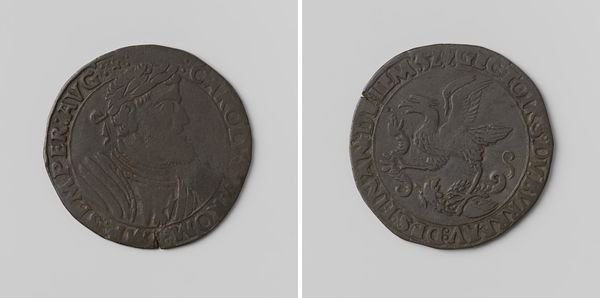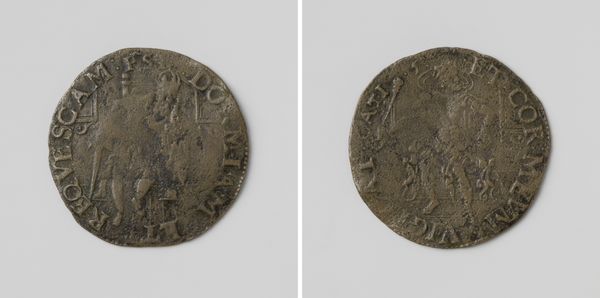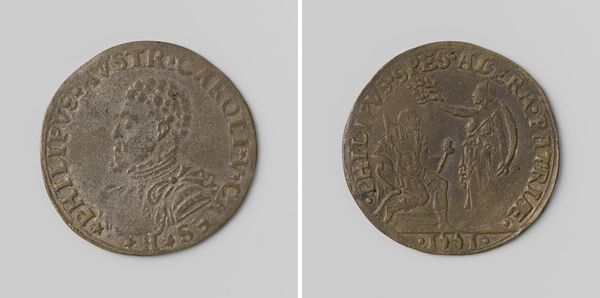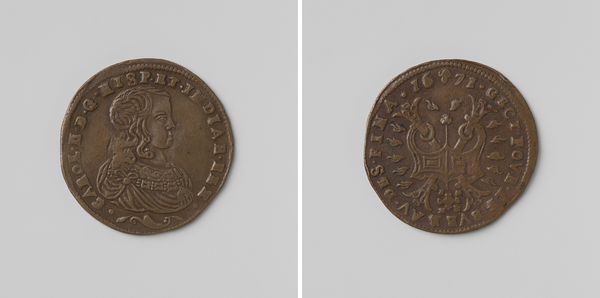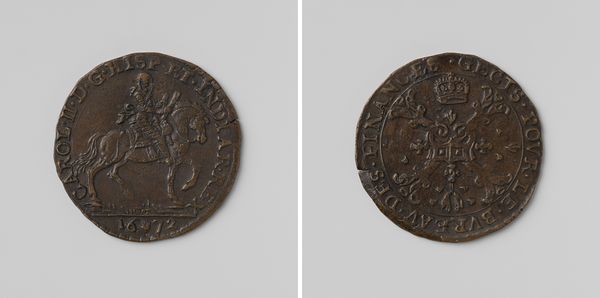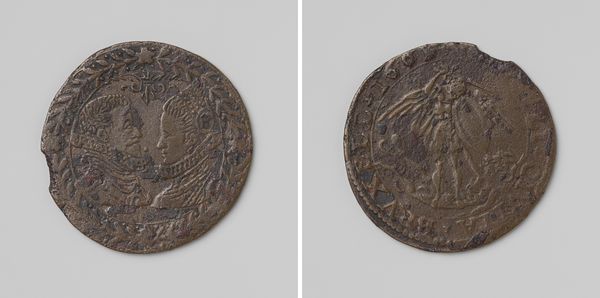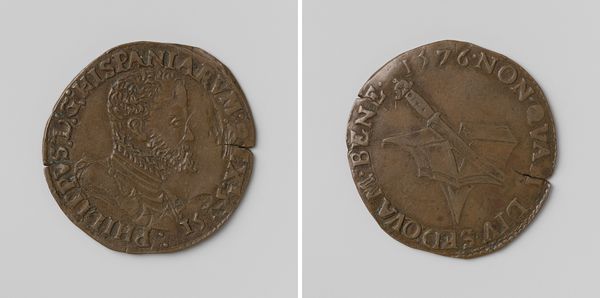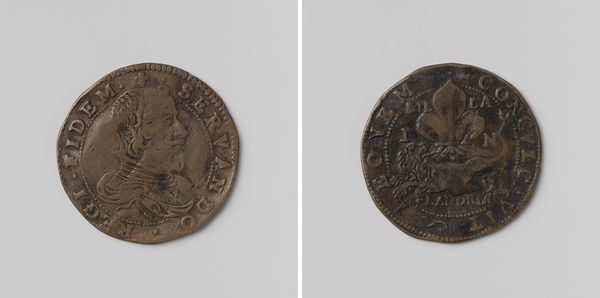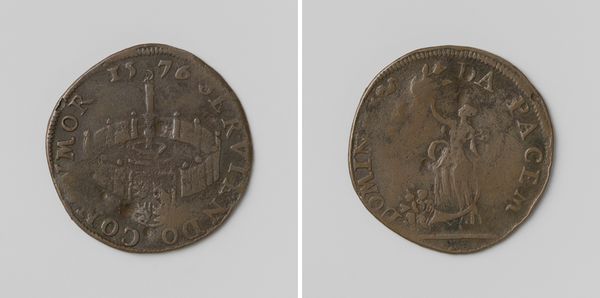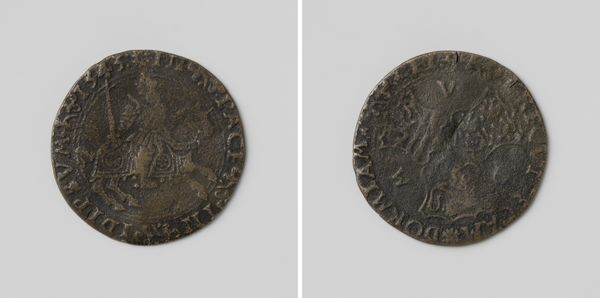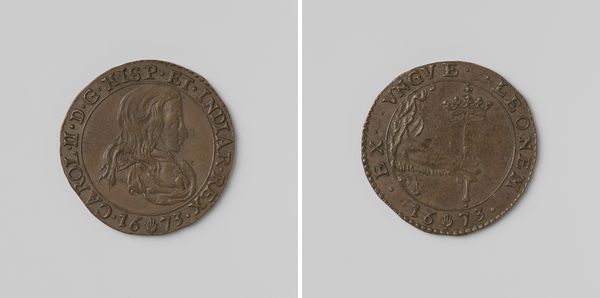
Karel V, Duits keizer, doet te Brussel afstand van het bewind over de Nederlanden, Milaan en Napels ten gunst van zijn zoon Filips, erfprins van Spanje 1555
0:00
0:00
anonymous
Rijksmuseum
print, metal, intaglio, relief, sculpture, engraving
#
portrait
#
medieval
# print
#
metal
#
intaglio
#
sculpture
#
relief
#
11_renaissance
#
sculpture
#
history-painting
#
coin
#
engraving
Dimensions: diameter 2.9 cm, weight 3.58 gr
Copyright: Rijks Museum: Open Domain
Editor: We’re looking at a print from 1555 called "Karel V, Duits keizer, doet te Brussel afstand van het bewind over de Nederlanden, Milaan en Napels ten gunste van zijn zoon Filips, erfprins van Spanje,” currently held at the Rijksmuseum. The prints, made using intaglio and metal engraving, depict two portraits of leaders or royals, appearing like coins. These artworks are medieval-looking! How would you interpret its historical relevance? Curator: It’s fascinating to view these portraits as coins. Throughout history, art has served as a powerful propaganda tool, and portraiture in the 16th century was no exception. Considering that prints could be easily disseminated, how do you think images of rulers circulating throughout the region might have impacted perceptions of power? Editor: It makes sense now, that these pieces acted as symbols of sovereignty. Distributing prints of powerful people would serve as powerful marketing for their legitimacy. Could it be linked to asserting control in the regions? Curator: Absolutely. Think about the political climate. Charles V, Holy Roman Emperor, was abdicating in favor of his son, Philip. These prints, therefore, wouldn’t just depict leaders; they broadcast a message of dynastic succession, aiming to legitimize the transfer of power amidst potential political instability and regional unrest. How might the selection and presentation of the figures contribute to that message? Editor: The formal portraiture probably added weight to that message. Now it's clear how something seemingly small and common can actually represent grand displays of cultural and political statements. Thanks for highlighting these intricacies. Curator: And thank you. Recognizing the interplay of art, power, and society helps us understand how even small-scale artworks could play a significant role in shaping public opinion and historical narratives.
Comments
No comments
Be the first to comment and join the conversation on the ultimate creative platform.

